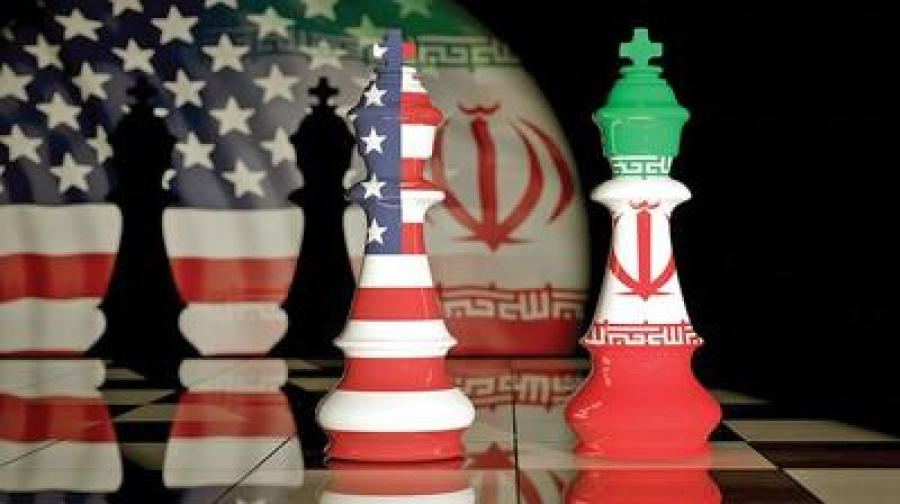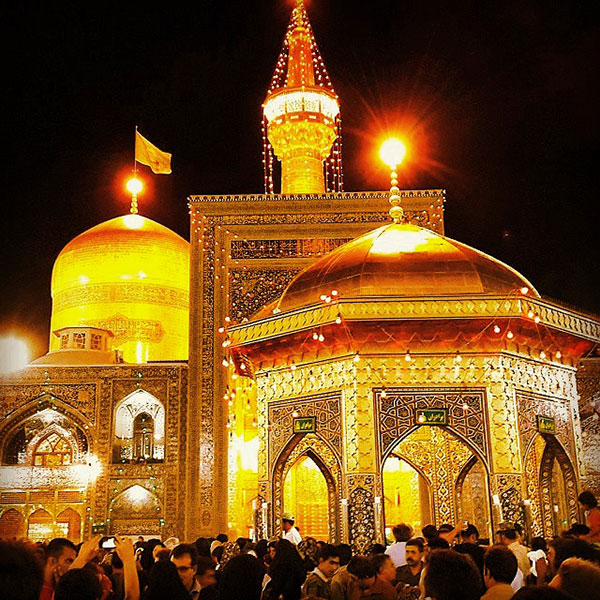Author: Mohammad Mahmoudi Kia, a member of the faculty of the Imam Khomeini and Islamic Revolution Research Institute
Iranian Diplomacy: Donald Trump, in his last appearance in the White House, is making great efforts to take great steps for the nationalist ideal, flavored with his exceptionalist American dream – Make America Great Again – in the time ahead. Therefore, he has opened many cases in the international arena, some of which have not even lasted more than a few days, just like what he said about Gaza and its purchase, or his other statements in this regard that indicate his mental confusion. However, it seems that Trump is seeking to present a proactive image of Republican America in relation to acute international issues without wanting to directly spend American resources on subsiding or containing these crises. On the other hand, the continuation of the current crises in Eastern Europe, as well as the complex and escalating crisis after October 7, is a major obstacle to the goals he declared in the slogan of the recent US presidential election campaigns, because the aforementioned regions are traditionally the place where US policies are spent, and the American order will not be able to survive in this geography without US presence, support, and intervention.
This is while America's main rival, China, sees these regions as the largest market for its products and bears no responsibility for the current crises there. Trump, who defines himself as the opposite of the cosmopolitan and globalist policies of the Democrats, has included the belief at the center of his policies and decisions that, while he should not be indifferent to the crises in the aforementioned regions, he should not spend US resources on crisis management and its uncertain outcome.
However, it seems that the crisis in the Middle East has created a different situation, in such a way that it seems that the plurality and multiplicity of actors involved in the current crisis, and in particular the state of American interests in this region, have changed Trump's view of the model for resolving the crisis.
In fact, although the Republican ruling party experiences and displays a kind of unity of opinion regarding the Ukrainian crisis, regarding the current crisis in the Middle East, a kind of dispersion of opinions can be distinguished into three main spectrums: warmongers such as Marco Rubio, Secretary of State and Mike Waltz, US National Security Advisor; isolationists such as James David Vance, Vice President; and interactionists such as Elon Musk. The fourth aspect of this circle of communication within the American elite is related to the influence and influence of Netanyahu, the criminal and evil Prime Minister of the Zionist regime, who has shown that he has a significant capacity to bring the United States government along - regardless of the political faction that dominates the White House - which could tip the balance in favor of the warmongers' position.
The policy of the Zionist army returning to the war campaign with Hamas and proposing new scenarios for the military occupation of Gaza and the complete destruction of Hamas on the one hand, and also proposing a new security equation in Lebanon called the Metulla-Beirut threat balance instead of the previous Tel Aviv-Beirut threat model, shows Netanyahu's determination to resolve Israel's long-standing challenge with the resistance, which of course cannot have been implemented outside of an agreement with Donald Trump. These same points and signs could indicate the escalation of the crisis in the Middle East.
The extensive and devastating military action of the United States and Britain against Yemeni Houthi positions and the unprecedented military presence in the Middle East and its neighboring regions, such as the Garcia base in the Indian Ocean, indicate the possibility of escalating the conflict beyond Yemen. In recent weeks and days, the United States has significantly increased its military presence in the Persian Gulf and Indian Ocean, deploying B-2 stealth bombers, cargo planes, and aerial refueling tankers alongside key assets such as the aircraft carriers USS Carl Vinson and USS Harry S. Truman. These actions indicate an increase in US preparedness, which is far from being expected to be such a large mobilization of resources and military presence solely to quell the Yemeni crisis. Therefore, all possible scenarios must be considered. Although the United States has adopted a policy of war against Ansar Allah in Yemen, it has a more cautious attitude towards Iran, which is partly due to the same division of opinion within its ruling body.
Donald Trump clearly does not want to enter into a direct military conflict with Iran because he has serious concerns about the unknown consequences of this policy, although recent developments in Syria, Lebanon, and Iraq have somewhat reduced the volume of Trump’s security concerns. However, Trump has pursued a two-pronged policy towards Iran that is accompanied by a certain ambiguity. On one side of this policy is a carrot-and-stick policy that invites Iran to join the international community, and on the other side, threatens it with the most severe sanctions and even war and military confrontation. The two-month deadline for Iran could also be partly associated with the scenario that during this period, Iran and consequently the other remaining parties in the resistance axis will be kept away from any effective action regarding the Yemen crisis and, by resolving the Yemen crisis, they will turn their full power against Iran; which, considering what was mentioned in the previous lines describing the current situation of the crisis, will not be so unlikely.
But on the other side of the field, what measures should Iran have? What possibilities are available for Iran to safely remove this potential threat from its front?
In the first step, Iran has strengthened its missile capabilities and deployed advanced air defense systems around the Strait of Hormuz, while increasing its military activities in the region without showing any clear signs of this presence. The unveiling of cities filled with missiles or other naval combat capabilities, such as the recent display of an astonishing missile city containing long-range ballistic missiles of the Islamic Revolutionary Guard Corps such as the Khyber-Shakan, Qadr-H, Emad, Hajj Qassem, Sejjil and Paveh cruise missiles, as well as thousands of high-explosive warheads buried deep in the ground, all indicate Iran’s readiness for a possible military confrontation with the United States and the occupying regime in Jerusalem.
A little further away from the geography of tension, the components of Iran’s power are becoming apparent. The recent victory of the army in Sudan and the recapture of the capital and Khartoum airport from the Rapid Support Forces rebels is noteworthy, while a little earlier Iran hosted high-ranking political and military officials from that country, which could mean the possible opening of another area of influence for Iran on the western shore of the Red Sea and further complicating the security dilemma of the Zionist regime.
This is while the Yemeni front has not stopped yet for various reasons that will be explained at another time, and there is a possibility of new surprises from the Yemeni army and armed forces, which would mean the possibility of increasing Iranian pressure on both sides of the Red Sea.
A little further away from the geography of tension, the possible invitation of Rafael Grossi to travel to Tehran also indicates Tehran's view of reducing the volume of European doubts. This could prevent the acceleration of the process of activating the trigger mechanism and, in a way, buy time for Iran.
The other side, in the vicinity of the geography of tension, refers to the Caucasus region. The recent regional diplomacy of the Foreign Minister, and in particular the recent trip to Armenia, supports Iran's serious activism in the South Caucasus region, which in itself requires a detailed analysis of the various aspects and dimensions of this regionalist policy, precisely at a time when there is the greatest possibility of war against Iran.
On the domestic side of the geography of tension, the lack of urgency in providing a response to Trump's letter and the visits of Iranian officials to countries in the region are somehow consistent with other aspects of Iran's declarative and declarative policy.
Conducting naval military exercises with Russia and China is another aspect of the Islamic Republic’s policy towards recent developments, which is expected to accelerate the implementation of Iran’s strategic cooperation documents with the two countries, which will lead to Tehran drawing closer to Moscow and Beijing.
Overall, it seems that Iran has kept the window of diplomacy with the United States open, but is in no hurry to enter into negotiations without achieving effective bargaining tools.
On the other hand, it has also considered the option of war a possibility and is considering possible scenarios for entering into a full-scale war. In these circumstances, the most important issue and factor in the crisis process is the management of inputs to the tension environment. If the inputs that create chaos on both sides of the conflict are not controlled, entering a military tension is inevitable.
In the author’s opinion, it is natural that Iranian agents are solely responsible for their own playing field and must protect it from any inputs that create chaos; These include: not deviating from the principled policy of a peaceful nuclear program without nuclear weapons; dispelling ambiguity about the nuclear program and providing a convincing response to the Agency's questions; preventing any internal tension or widespread chaos; maintaining Hezbollah's policy of adherence to the ceasefire; controlling the scope of tension on the Yemeni front; controlling the policy of inaction of the Islamic resistance in Iraq; refusing to take any action related to Iran's security policy, etc. Controlling these and other similar matters in the current situation, in addition to demonstrating Iran's power of activism in the region, are effective factors in managing the current crisis and can be considered as cards in Iran's possession at the table of possible upcoming negotiations.
In a normal situation, the upcoming 5-month period should be controlled with the greatest sensitivity and care, because outside this period, some of the current urgent threats, such as snapback, will not be able to materialize.


















